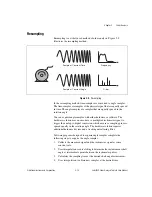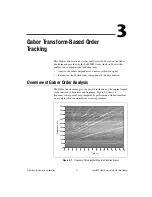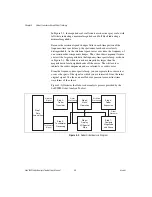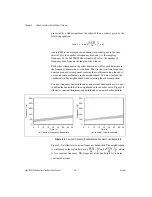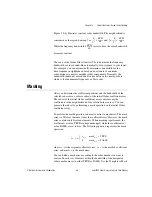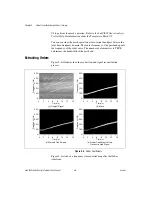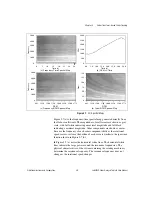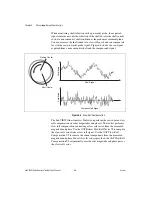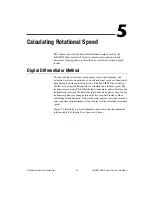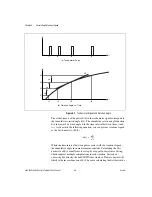
Chapter 3
Gabor Transform-Based Order Tracking
©
National Instruments Corporation
3-5
LabVIEW Order Analysis Toolset User Manual
Figure 3-3(b) illustrates constant order bandwidth. The neighborhood is
considered as the region between
and
.
While the frequency bandwidth
varies in time, the order bandwidth
k
remains constant.
You can use the Gabor Order Analysis VIs to determine the frequency
bandwidth or order bandwidth automatically or in response to your input.
For example, you can automatically determine a bandwidth for the
time-frequency neighborhood based on an estimate of minimum
order-distance to nearest neighbor order-components. Normally, the
bandwidth should not exceed the distance between two nearby orders,
which is the fundamental frequency, or first order.
Masking
After you determine the coefficient positions and the bandwidth of the
selected order curves, select a subset of the initial Gabor coefficient array.
The subset of the initial Gabor coefficient array contains only the
coefficients in the neighborhood of the selected order curves. You can
generate the subset by performing a mask operation on the initial Gabor
coefficient array.
To perform the mask operation, you must construct a mask array. The mask
array is a 2D array the same size as the coefficient array. However, the mask
array contains only Boolean elements. When masking is performed, the
coefficients at value TRUE are kept unchanged, while the coefficients at
value FALSE are set to zero. The following equation represents the mask
operation.
,
where
c
m
,
n
is the original coefficient array,
is the masked coefficient
array, and
mask
m, n
is the mask array.
You can build a mask array according to the order number you want to
analyze. In each row, elements within the bandwidth of the designated
order number are set to either TRUE or FALSE. Use the Template to Mask
n
k
2
---
+
RPM
60
-------------
×
n k
2
---
–
RPM
60
-------------
×
k
RPM
60
-------------
c
ˆ
m n
,
c
m n
,
mask
m n
,
TRUE
=
0
mask
m n
,
FALSE
=
=
c
ˆ
m n
,








